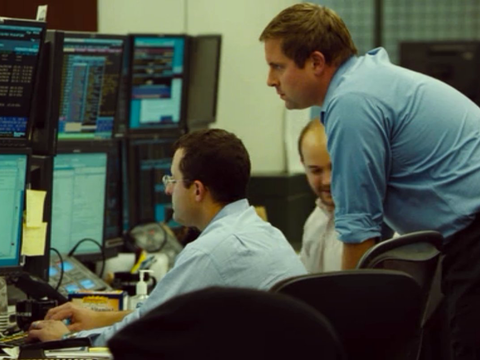
If three of your closest competitors have working capital turnover ratios of 5, 4, and 6, and you have a ratio of 7, your ratio is high because it exceeds that of your competition. Blue Company, on the other hand, had $500,000 in sales and $125,000 in working capital. Blue Company spent its working capital only four times throughout the year to generate the same level of sales as Red Company. Calculate the working capital turnover ratio of the Company ABC Inc., which has net sales of $ 100,000 over the past twelve months, and the average working capital of the Company is $ 25,000. It is extremely useful for the management, as it helps them ascertain the firm’s ability to make use of its current resources in facilitating its turnover.
The working capital turnover ratio measures how well a company is utilizing its working capital to support a given level of sales. A high turnover ratio indicates that management is being extremely efficient in using a firm’s short-term assets and liabilities to support sales. Together with ratios such as inventory turnover, accounts receivable turnover, the working capital turnover ratio is a key metric in working capital management. Management monitors cash flow, current assets, and current liabilities to maintain smooth business operations.

Non-operating assets – remove any cash and cash equivalents from the current assets. A better way is to look at the net working capital, which offers a more practical measure. The net working capital focuses on only the operating assets and liabilities. While the concepts discussed herein are intended to help business owners understand general accounting concepts, always speak with a CPA regarding your particular financial situation. The answer to certain tax and accounting issues is often highly dependent on the fact situation presented and your overall financial status.
Learn the art of investing in 30 minutes
However, such comparisons are meaningless when working capital turns negative because the working capital turnover ratio then also turns negative. A high turnover ratio shows that management is being very efficient in using a company’s short-term assets and liabilities for supporting sales. In other words, it is generating a higher dollar amount of sales for every dollar of working capital used. Here the company is probably handling too many account receivables, that is the due amount to be paid by a client or customer. With the burden of account receivables and mismanaged inventory, the liabilities and bad debts become excessive.
KELYA: Are These 3 Outsourcing Stocks a Good Buy for August? – StockNews.com
KELYA: Are These 3 Outsourcing Stocks a Good Buy for August?.
Posted: Fri, 04 Aug 2023 15:36:25 GMT [source]
He is a CFA charterholder as well as holding FINRA Series 7, 55 & 63 licenses. He currently researches and teaches economic sociology and the social studies of finance at the Hebrew University in Jerusalem. Since we now have the two necessary inputs to calculate the turnover ratio, the remaining step is to divide net sales by NWC. In order to match the time period of the numerator with that of the denominator, using the average NWC balances between the beginning and ending periods is recommended.
Can a companies Working Capital Turnover Ratio be negative?
Using the numbers above, the net working capital works out as the difference between the current assets and current liabilities, which equals $95,000. Working capital makes up most of the company’s investments in growth. The working capital turnover ratio helps investors understand each company’s efficiency. There are two ways to best make use of the Working Capital Turnover Ratio. The first is to compare the calculated ratio with the companies own historical records to spot trends. A stable ratio means that money is flowing in and out of the business smoothly.
- The working capital turnover ratio is a valuable metric for evaluating a company’s financial health and its ability to generate profits.
- Thus, the company generates higher revenue dollars for each working capital used.
- Working capital makes up most of the company’s investments in growth.
- This puts them at risk of running out of money to fund their business even though the ratio suggests they are doing better than the competition.
A lower ratio implies that the sales generated are lower than they should be, considering the amount invested in the business by way of working capital. Hence, the management can take necessary steps in order to improve its sales and facilitate growth and development. Therefore, we get a negative working capital turnover ratio, which indicates that Target is not generating revenue from its working capital. The net working capital version of the ratio gives us a good idea relative to the company’s free cash flow, as we use the net working capital to help measure the free cash flow. To calculate our working capital turnover ratio, we divide Microsoft’s revenue by the non-cash working capital.
Clients and results
See how your business compares to peers in ARR Growth, R40, Retention, Net Margin and Runway. Historically, Target has hovered in the 1.0 to 1.2 range for the current ratio over the last seven years. Second, working capital consists of the components a company uses to generate those sales. Apply for up to $4 million in working capital and Flow Capital will work with you to develop the best structure suited to your company’s needs. Get instant access to video lessons taught by experienced investment bankers. Learn financial statement modeling, DCF, M&A, LBO, Comps and Excel shortcuts.
That said, if your working capital turnover ratio is too high, it may be misleading. At first glance, it looks as though you’re operating at very high efficiency. If you’re working with very low working capital funds, you may run out of money to fund your business. Your working capital turnover ratio is typically considered high when it is greater than the turnover ratios of similar companies within the same industry.
Working capital refers to the money your business has available to spend on essential payments, operations, etc. after all bills and debt installments have been paid. It can also be used to see if a company will be able to pay off its debts in a set period of time and avoid running out of cash flow as a result of increased burn requirements. Companies with higher working capital turnover ratios are more efficient in running operations and generating sales (the more sales you bring in per dollar of working capital spent, the better). This is where the working capital turnover ratio (WCTR) comes into play. A simple mathematical formula (also known as net sales to working capital), it calculates how efficiently a company uses working capital to generate sales.
Granted, some of the cash on the balance sheet fills a need and can act as short-term liquidity, but much of it tends to sit in fixed investments such as bonds. As a company accumulates more cash on its balance sheet, it can distort the working capital of the company. Working capital can help us measure a company’s liquidity and short-term health. Okay, let’s dive in and learn more about the working capital turnover ratio. Venture Debt is a financing structure similar to that of a traditional bank loan.
What a Low Ratio Indicates
Let’s explore the advantages and disadvantages of using this accounting principle. Lastly, managing bill payments to suppliers is another way to improve this ratio. For example, management may decide to pay the supplier early to get the discount offered, thus saving more cash. Or, they decide to switch to another supplier which offers more lenient credit terms. So, the company can use it to pay bills, increase working capital, or be invested.

A low ratio can indicate over investment in current assets that are not supported by current sales. This can result in inventory obsolescence or accounts receivable bad debt writeoffs. If you want to see how your business performs compared to others, it’s important to focus on businesses in your same industry.
This is the amount of time required to convert your net current assets and liabilities into cash. If Company A doesn’t have enough working capital to cover its obligations, the lack of funds can result in the liquidation of assets, potential bankruptcy, and legal issues. Yes, a companies working capital ratio can be negative if working capital turnover ratio can be determined by a companies Working Capital is negative.A companies working capital is negative when the companies current liabilities exceed its current assets. Negative working capital is a giant red flag for a company as it means that the company is in financial trouble and management needs to act immediately to source additional funding.

The working capital turnover ratio is also known as net sales to working capital. Using these types of deeper dives into ratios can help give you better insight into industries and specific companies. Try to always compare across industries or sectors to get better comparisons. The working capital version gives us a good sense of how Microsoft allocates its capital to drive sales.
This ratio measures the number of times a company’s working capital is used to generate revenue over a given period. A high working capital turnover ratio is indicative of efficient use of working capital, while a low ratio may indicate a less efficient use of working capital. The working capital turnover ratio is calculated by dividing a company’s net sales by its working capital. The ratio provides insight into how well a company is using its working capital to generate sales. A higher ratio indicates that a company is generating more sales with its available working capital, while a lower ratio suggests that a company may not be using its working capital effectively. The working capital turnover ratio is an efficiency and activity ratio.
Meanwhile, the average working capital is calculated by adding up the working capital of the current period with the number in the previous period, divided by 2. The following is the mathematical formula for working capital turnover. Typically speaking, a high working capital turnover ratio may give you a Competitive Edge in your industry.

Recent Comments